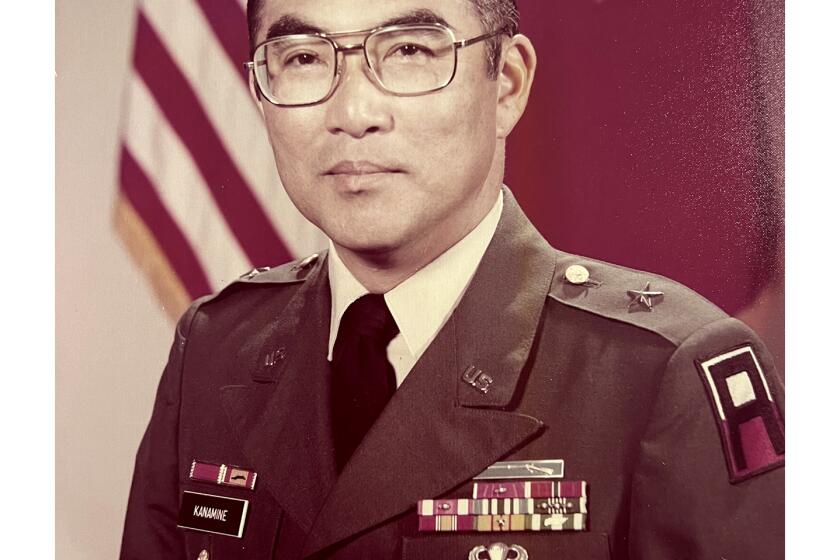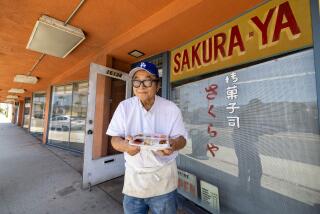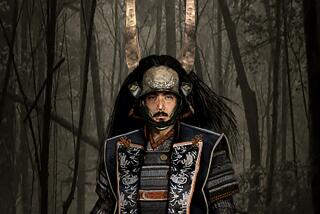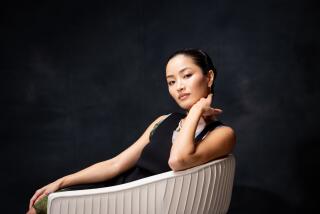Fujima Kansuma dies at 104; master kabuki dancer taught generations of Japanese Americans
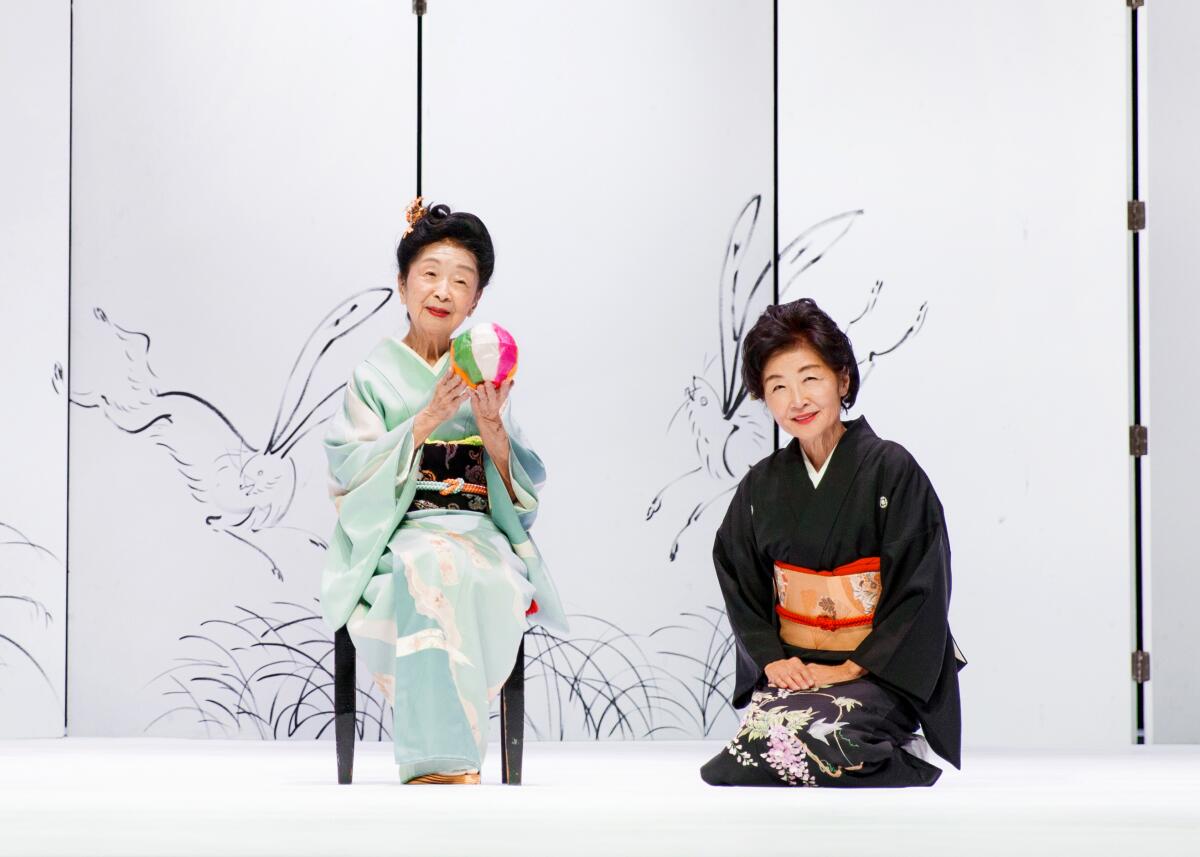
- Share via
Her father wanted sons to carry on the family name, but his wife gave birth to daughters. And so the famed Fujima Kansuma, master kabuki dancer who entertained generations of Japanese Americans, embraced the art because it allowed her to take on male roles as a way of fulfilling her dad’s wish.
Family members say she did not have any hobbies except dance — and she stayed true to her lifelong passion, performing and teaching right up until her death from congestive heart failure on Feb. 22. She was 104.
Born in San Francisco on May 9, 1918, Kansuma was the older of two sisters originally named Sumako Hamaguchi before she assumed her stage name. As a child, she was often sick and bedridden, prompting a doctor to advise her parents to find an activity to build up her immunity and strength. Her mother chose kabuki, and when the family moved to Los Angeles, their daughter began lessons at 9, immersing herself in the classical form of Japanese theater, mixing drama with traditional dance.
Kansuma joined an all-girls troupe, touring Hawaii, then deciding she wanted to learn from the best. Yet the best was in the ancestral homeland.
“That was significant that they let her go,” said her daughter, Miyako Tachibana, 72. “All her life, my mom had wonderful support in her parents and they rose to the occasion when she told them what she truly desired.”
After graduating from high school, Kansuma headed to Japan where she studied under the “God of Theatre,” Onoe Kikugoro VI, a kabuki star who ran his own school. Over the course of four years she absorbed the rigors of acting, dancing, learning how to conduct a tea ceremony and arrange flowers, how to dress in kimonos and practicing etiquette. Her peers mocked her as “the girl from America,” but her family said she was determined to carry on, picking up new skills such as playing the taiko and tsuzumi, both percussion instruments.
Her teacher gave her the name Kansuma, and following competitions against some of Japan’s top students, he granted her the honor of performing one of his best known dances for her professional debut.
At 21, Kansuma came home with trunks full of costumes and wigs and quickly opened her first studio in a downtown Los Angeles hotel.
Throughout his military career, Kanamine led the investigation into the My Lai Massacre and researched the toxic chemical Agent Orange.
“She was a teacher who took into consideration all the personalities of those around her,” said Annie Yoshihara, one of her lifelong students. “She made dancing comfortable for all of us, knowing our shortcomings. She made sure she catered to every person in a special way.”
“When you are in the room with her, the dance and the dancer are what you focus on,” said Tachibana. “My mother was just a doll. She even looked like a doll. At 4 feet 11 and a half, she would always try to get taller by her hairstyle, or by her heels. On the stage, she was gargantuan. And she was captivating. The inner presence that she had under the spotlight, it was incredible.”
“Osho-san,” as her longtime students respectfully called her, launched her career before World War II. In the earliest forms of kabuki, female performers portrayed both men and women in comic scenes about ordinary life. Yet not long after she began teaching, Japan attacked Pearl Harbor in 1941, pulling the U.S. into the war and leading the government to forcibly relocate and imprison more than 120,000 people of Japanese descent.
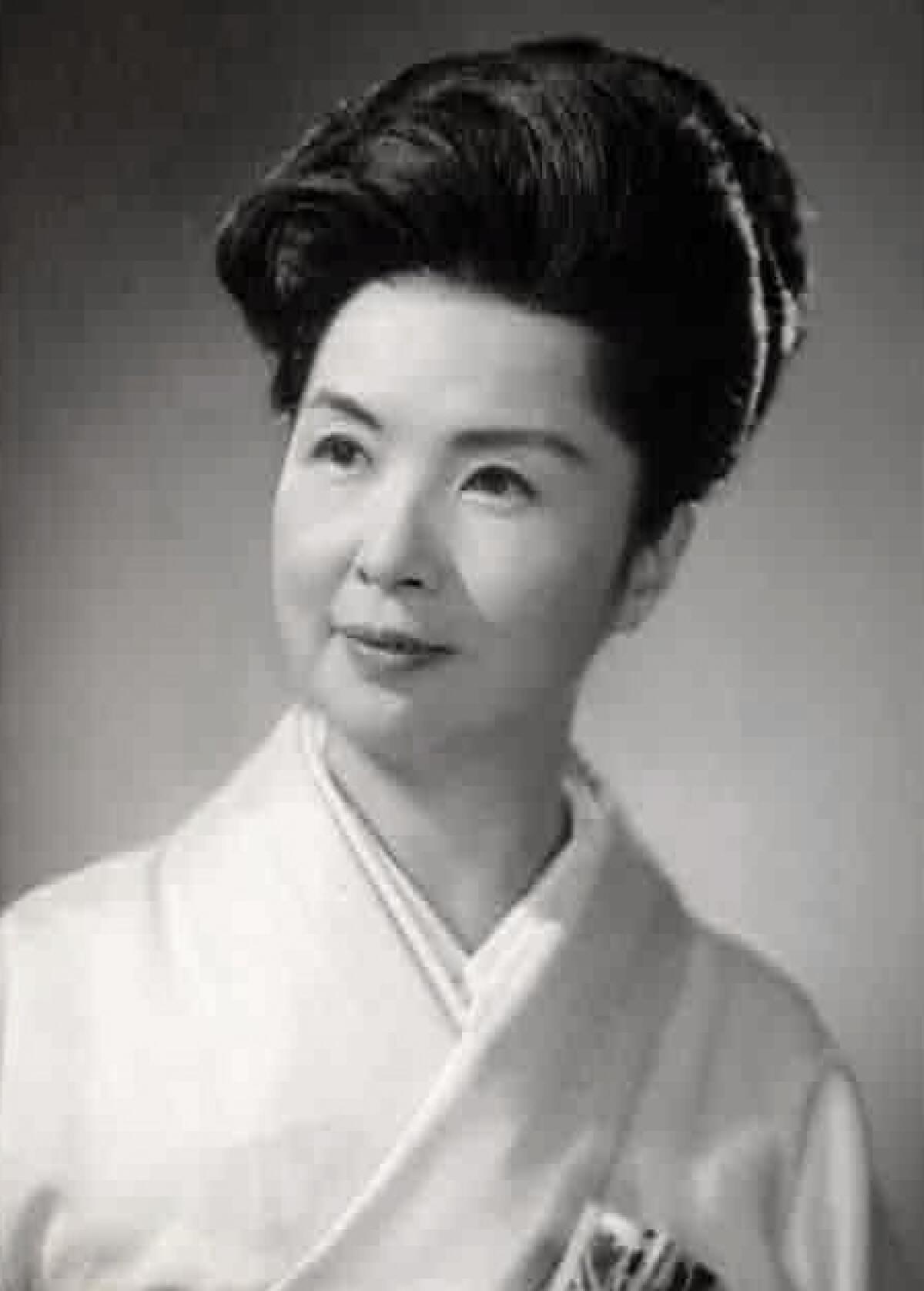
Kansuma and her family were moved around to different prison camps, ending up in Rohwer, Ark. The camp administrator sought out Kasuma after being inundated with letters from fellow detainees asking to continue their dance lessons.
“So he found my mother, learned what she was about and allowed her to teach at some of the places where she was requested,” Tachibana said.
He also began to take her on tour, including to private colleges, in an effort “to give the white people of America an idea of the real nature of the Japanese — to show them that this is not the enemy. She was like a goodwill ambassador,” Tachibana said. “She offered a sense of comfort through her dance.”
Later, accompanied by an armed guard, Kasuma received permission to travel to Los Angeles to retrieve more costumes and music. In late 1945, when the war ended, she and her family returned to L.A. where she threw herself into a strict regime of teaching and performing, participating in dozens of Japanese American cultural events annually across Southern California.
As her reputation spread, more and more students flocked to her classes in Little Tokyo.
Yoshihara, 77, was only 4 when she first met Kansuma.
“She said to me, ‘take off your shoes’ and I wouldn’t do that. So she created a routine with a doll in the studio to get my attention,” Yoshihara said. “The next week when I came back, I brought my own doll and that kind of jazzed me and I started cooperating. I’ve been taking lessons ever since.”
Kansuma worked with Walt Disney, who liked to infuse an “international flavor” in his shows. When he presented a “Family Night” at the Hollywood Bowl, her kabuki students would perform after the Mouseketeers and other acts. And when Disney organized a “Christmas in Many Lands” parade at Disneyland, Yoshihara and her troupe were invited to march and dance.
Even at a dance lesson days before her death, Kansuma “was, as usual, full-speed,” Yoshihara said. In her fourth-floor studio at L.A.’s Japanese American Cultural and Community Center, “her voice rang clear. She was yelling at us. She said ‘turn around, go backwards, come forward.’ She was a great choreographer. She never missed any steps.”
Through more than 70 years of dancing, Kansuma taught nearly 2,000 students, among them her daughter, who achieved kabuki master status.
An image of 2-year-old Yuki sitting on a suitcase at Union Station, waiting for a train to take her to the internment camp, resonated for decades.
Toyo Wedel, 80, was 6 when Kansuma stopped by her dance class in Chicago during one of Kansuma’s tours. At the time, her busy family life left Wedel no time to pursue her interest in dance.
Her Japanese teachers had just returned from Los Angeles, where Osho-san gave them private instruction.
“I always loved dance, but I had to raise my kids,” said Wedel, who eventually moved to Thousand Oaks. But when her youngest son went off to college in 1998, she called up Kansuma.
“She said to me: ‘I’m 80. You come back.’ So I went back — that was 24 years ago,” Wedel said. “She’s just the kindest teacher you could have. She would tell us the story behind the dance, the story behind the character. I have always loved how she never stops promoting her art and our traditions.”
Kansuma’s dedication to sharing the beauty of kabuki and her Japanese heritage won her awards, including the Order of the Precious Crown, Apricot, from the Japanese government in 1985 and the National Heritage Fellowship from the National Endowment for the Arts in 1987.
In 2018, at 100, she served as choreographer for the Los Angeles Nisei Week Parade, continuing a tradition of Nisei Week involvement that showcased her students’ performances for decades.
A celebration of her life has been scheduled for April 16 at the JACCC’s Aratani Theater. Kansuma is survived by her daughter, son-in-law Noriyoshi Tachibana; and three grandchildren, Jonathan, Taizo and Miwa Tachibana.
Wedel said she will never forget her final moment with Kansuma. “Her last words to me were — as I said goodbye to her after practice — ‘be careful going home because of the sun.’ At 104, she still worried about me driving into the glare of the sun. I couldn’t believe it.”
More to Read
Sign up for Essential California
The most important California stories and recommendations in your inbox every morning.
You may occasionally receive promotional content from the Los Angeles Times.

